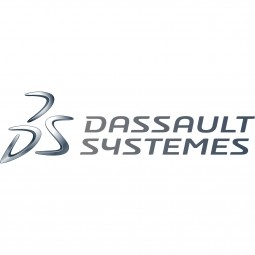公司规模
Large Corporate
地区
- Europe
- America
国家
- France
- United States
产品
- 3DEXPERIENCE
- EXALEAD
技术栈
- Data Management Systems
- ERP Systems
实施规模
- Enterprise-wide Deployment
影响指标
- Productivity Improvements
- Customer Satisfaction
技术
- 平台即服务 (PaaS) - 数据管理平台
适用行业
- 航天
适用功能
- 物流运输
- 采购
用例
- 资产跟踪
- 库存管理
服务
- 数据科学服务
- 系统集成
关于客户
Dassault Aviation is a major player in the global aviation industry. Founded in 1936, the company is known for its business and military aircraft. The company has a workforce of 12,000 employees and is headquartered in Saint Cloud, France. In 2011, the company reported consolidated sales of €3.31 billion. The company’s Falcon Spare Parts department is responsible for managing a global network of more than 80,000 spare parts. The department performs over 200,000 shipments per year to over 75 countries and handles 300,000 part references in its various data centers, representing a total catalog value of US$730 million.
挑战
Dassault Aviation’s Falcon Spare Parts department needed to provide a consolidated view of all spare parts information worldwide. The division was managing a global network of more than 80,000 spare parts which required precise logistical coordination. Over the years, each site has come to rely on its different solutions to locate the appropriate spare parts but, as a company, they did not have an overall and global view of their data. Moreover, these different solutions use different technologies – mainframe-based or client-server – which contributed to the isolation of each of their sites. To gain in efficiency, they needed a consolidated view of all their spare parts from any of their locations.
解决方案
Dassault Aviation Falcon Spares turned to the 3DEXPERIENCE platform and chose EXALEAD to access the wealth of data stored in its multiple data management systems. EXALEAD can explore, gather and analyze structured or unstructured information stored in Dassault Aviation Falcon Spares’ various data sources and provide a consolidated view of that information in a way that has meaning to the person performing the search. Even though the data is still stored in their different databases, they can now access it from anywhere with a single application. The advantage, for a manager or non-technical employee, is that they are not required to learn three or four applications to find the information they need; they have one unique and intuitive user interface and one consolidated view. Moreover, if they wanted to see all their data, they would have to search in every one of their applications separately. With EXALEAD, it does the search for them.
运营影响
数量效益

Case Study missing?
Start adding your own!
Register with your work email and create a new case study profile for your business.
相关案例.

Case Study
Airbus Soars with Wearable Technology
Building an Airbus aircraft involves complex manufacturing processes consisting of thousands of moving parts. Speed and accuracy are critical to business and competitive advantage. Improvements in both would have high impact on Airbus’ bottom line. Airbus wanted to help operators reduce the complexity of assembling cabin seats and decrease the time required to complete this task.

Case Study
Aircraft Predictive Maintenance and Workflow Optimization
First, aircraft manufacturer have trouble monitoring the health of aircraft systems with health prognostics and deliver predictive maintenance insights. Second, aircraft manufacturer wants a solution that can provide an in-context advisory and align job assignments to match technician experience and expertise.

Case Study
Aerospace & Defense Case Study Airbus
For the development of its new wide-body aircraft, Airbus needed to ensure quality and consistency across all internal and external stakeholders. Airbus had many challenges including a very aggressive development schedule and the need to ramp up production quickly to satisfy their delivery commitments. The lack of communication extended design time and introduced errors that drove up costs.

Case Study
Accelerate Production for Spirit AeroSystems
The manufacture and assembly of massive fuselage assemblies and other large structures generates a river of data. In fact, the bill of materials for a single fuselage alone can be millions of rows of data. In-house production processes and testing, as well as other manufacturers and customers created data flows that overwhelmed previous processes and information systems. Spirit’s customer base had grown substantially since their 2005 divestiture from Boeing, resulting in a $41 billion backlog of orders to fill. To address this backlog, meet increased customer demands and minimize additional capital investment, the company needed a way to improve throughput in the existing operational footprint. Spirit had a requirement from customers to increase fuselage production by 30%. To accomplish this goal, Spirit needed real-time information on its value chain and workflow. However, the two terabytes of data being pulled from their SAP ECC was unmanageable and overloaded their business warehouse. It had become time-consuming and difficult to pull aggregate data, disaggregate it for the needed information and then reassemble to create a report. During the 6-8 hours it took to build a report, another work shift (they run three per day) would have already taken place, thus the report content was out-of-date before it was ever delivered. As a result, supervisors often had to rely on manual efforts to provide charts, reports and analysis.

Case Study
Developing Smart Tools for the Airbus Factory
Manufacturing and assembly of aircraft, which involves tens of thousands of steps that must be followed by the operators, and a single mistake in the process could cost hundreds of thousands of dollars to fix, makes the room for error very small.








